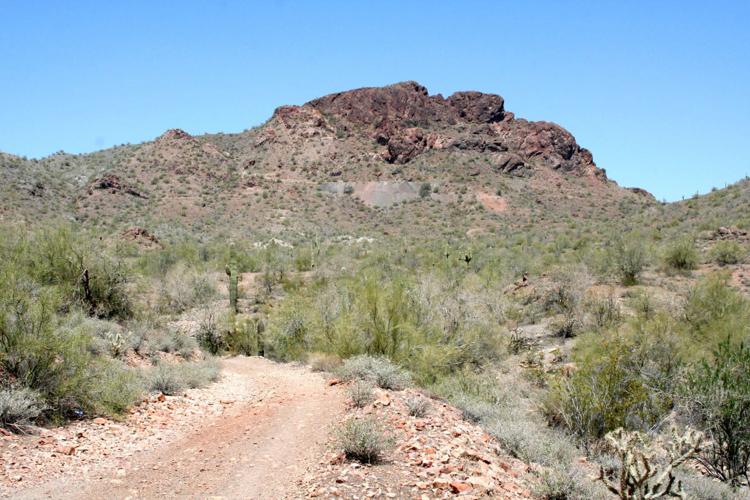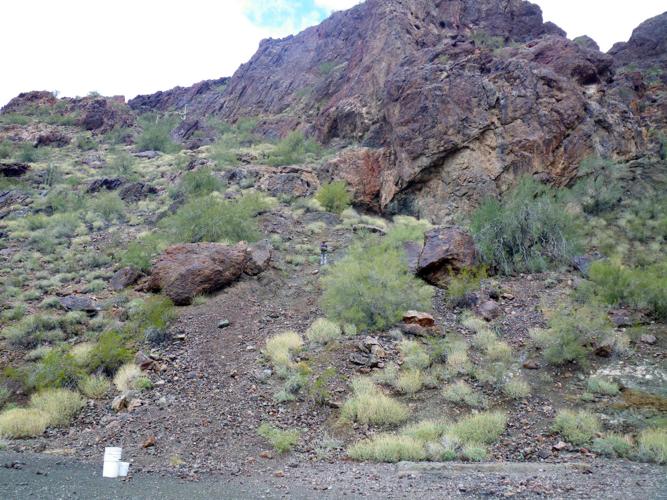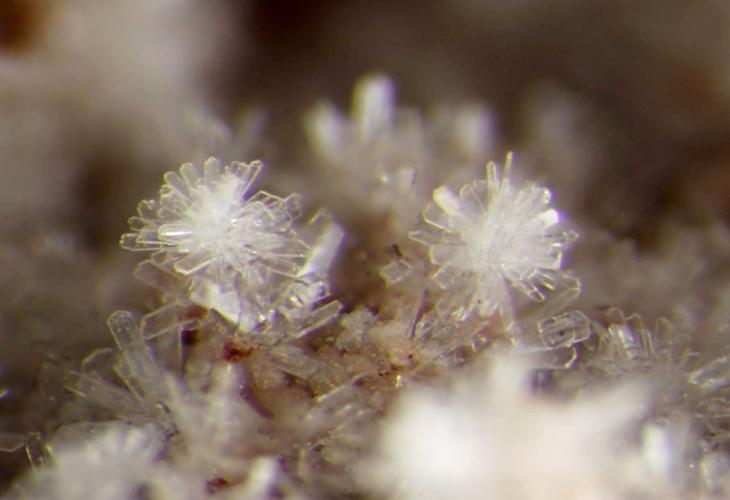One of the most prominent mines in the Big Horn Mountains 75 miles west of Phoenix in the Osborne Mining District is the Tonopah-Belmont Mine.
Discovered in the early 1900s, the mine was located by George Dillard, Dan McNeil and Charles Wilcot in an area composed of pre-Cambrian schist, gneiss and granite covered by thick flows of andesite and rhyolite intruded by ore shoots.
Water necessary to operate the compressor and mining camp was acquired six miles south of the mine from a 600-feet-deep well. Christened the Belmont-McNeil Mine, it was renamed the Tonopah-Belmont Mine after its acquisition in 1926 by a syndicate of Nevada miners comprising the Tonopah-Belmont Co. Although the mine was a relatively small operation employing up to 50 men, most of its development occurred at this time.
By 1930, the mine was producing $610,000 in copper, lead, gold and silver. Low metal prices caused by the Depression subsequently closed the mine, though more than 10,000 tons of old tailings were shipped for smelter flux and 2,750 tons of high-grade gold-lead ore were recovered by 1940. Rails and pipe were also installed to accommodate gold recovery from a ledge opened by drifting at the 500-foot level. Lessees shipped 7,000 tons of ore during World War II.
The mine was connected by an 18-mile haulage road that reached the main line of the Southern Pacific Railroad at Tonopah Station. High-grade concentrates were shipped for further refinement to the El Paso smelter. The remainder was shipped to a cyanide mill at the Vulture Mine.
At 500 feet deep below the adit level, mine development consisted of multiple shafts and more than 12,000 feet of lateral workings. The ore was hoisted to the 100-foot level from the 250-, 400- and 500-foot levels, then trammed through an extraction tunnel for processing at an onsite mill and a 65-ton flotation concentrator.
Later attempts to find a rich ore body included an unsuccessful 1,043-foot diamond drill hole test in 1962 undertaken by the Milca Mining Co. that revealed a core of black andesite of no significant value.
Mining geophysics studies conducted by Geonics, Inc. in 1969, including induced polarization surveys, revealed no appreciable concentrations of polarizable metallic sulfides. Subsequent assays on samples recovered from nearby outcroppings including one notable area showed 3.43 troy ounces per ton of platinum.
Lakeshore Minerals Inc., a Canadian mining company, planned to conduct open-pit mining at the site in the late 1980s. Subsequent drilling took place to reveal geologic structures and intersecting mineralization, yet no development followed.
Research conducted in the late 1990s documented that the Mexican free-tailed bat and the California leaf-nosed bat used the mine as a home during the day while flying 15 miles at night to feed on insects in the agricultural fields around Tonopah.
Remediation work at the site in 2001 included installation of gated access to the McNeil Tunnel.
The mine has for many years been of interest to mineral collectors, including mineral dealer Dave Shannon, who in 1984 reported that timbers in the main adit and vertical shaft of the mine burned, resulting in the creation of unusual lead minerals. Shannonite, the rare lead oxycarbonate mineral found at the mine, was named after him.
The mine tailings remain accessible and host diverse select and rare lead minerals, many of which are micromount size. Notable discoveries have been made including bechererite, a light-green, transparent mineral with acicular crystals.
Herbertsmithite, a rare copper-zinc hydroxide chloride recently found at the mine, is a two-dimensional quantum spin liquid as derived from its Kagome lattice structure, meaning that its atomic spins continue movement at zero temperature. Unique magnetic properties include magnetic particles undergoing consistent fluctuating, scattered orientations.
Rongibbsite, a zeolitic aluminosilicate lead-bearing mineral, was recently discovered in a nearby unnamed prospect in the Big Horns.
Named after its discoverer, Ronald Bradford Gibbs, a mineral collector and mining engineer from Tucson, the mineral has the distinction of being the first natural aluminosilciate with lead as the only extra-framework cation.







